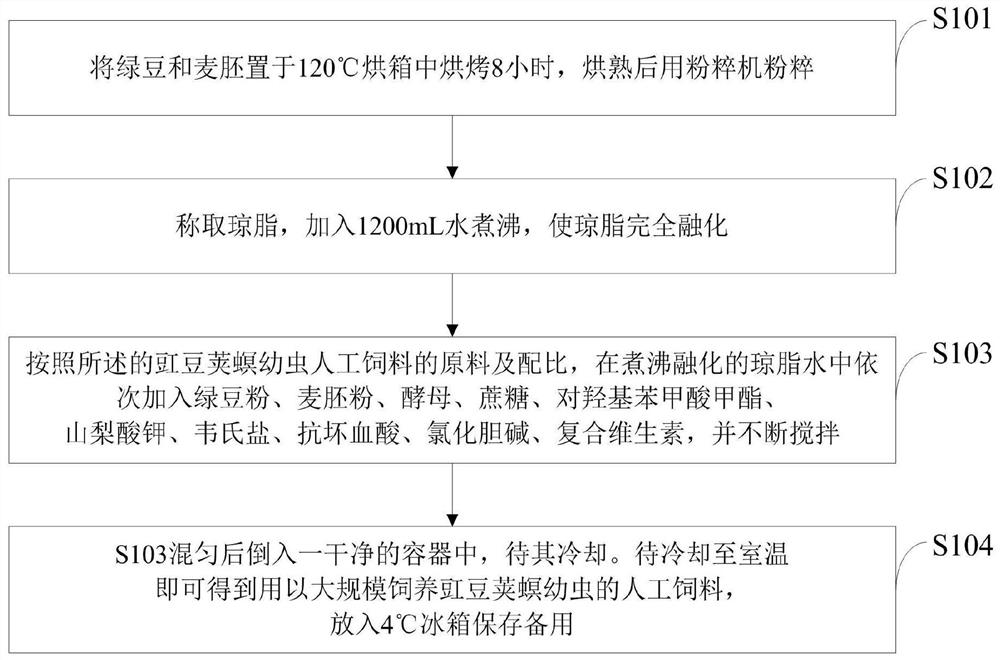Maruca testulalis larva artificial feed and preparation method thereof
A technology of artificial feed and pod borer, which is applied to the preservation method of animal feed raw materials, animal feed, animal feed and other directions, can solve the problems of perishable feed, low egg production, difficulty in meeting the needs of insect sources, etc., and improve the anti-corrosion effect. , optimize the formulation steps, protect the effect of ascorbic acid
- Summary
- Abstract
- Description
- Claims
- Application Information
AI Technical Summary
Problems solved by technology
Method used
Image
Examples
preparation example Construction
[0033] Such as figure 1 Shown, the preparation method of the cowpea pod borer larva artificial feed that the embodiment of the present invention provides comprises the following steps:
[0034] S101, put mung beans and wheat germ powder in an oven at 120°C and bake for 8 hours, and grind them with a grinder after they are cooked.
[0035] S102, weigh the agar, add 1200mL water to boil, and make the agar completely melt.
[0036] S103, according to the raw materials and proportions of the artificial feed for cowpea pod borer larvae, sequentially add mung bean powder, wheat germ powder, yeast, sucrose, methyl p-hydroxybenzoate, potassium sorbate, and Webster's into the boiled and melted agar water Salt, Ascorbic Acid, Choline Chloride, Multivitamins, and stirring constantly.
[0037]Mix S104, S103 and pour it into a clean container, let it cool down. After cooling to room temperature, the artificial feed for large-scale rearing of the larvae of the cowpea pod borer can be obt...
Embodiment 1
[0048] Put 100 cowpea pod moth pupae in the egg-laying cage, and after they emerge and lay eggs, use the newly hatched larvae as the source of insects for testing, insert them into the feed of formula 1 in Table 1, and put them into the insect breeding room for raising , the larva rearing conditions were 26°C±2°C, and the relative humidity was 40%.
Embodiment 2
[0050] Put 100 cowpea pod moth pupae in the egg-laying cage, and after they emerge and lay eggs, use the newly hatched larvae as the source of insects for testing, insert them into the feed of formula 2 in Table 1, and put them into the insect breeding room for raising , the larva rearing conditions were 26°C±2°C, and the relative humidity was 40%.
PUM
 Login to View More
Login to View More Abstract
Description
Claims
Application Information
 Login to View More
Login to View More - R&D
- Intellectual Property
- Life Sciences
- Materials
- Tech Scout
- Unparalleled Data Quality
- Higher Quality Content
- 60% Fewer Hallucinations
Browse by: Latest US Patents, China's latest patents, Technical Efficacy Thesaurus, Application Domain, Technology Topic, Popular Technical Reports.
© 2025 PatSnap. All rights reserved.Legal|Privacy policy|Modern Slavery Act Transparency Statement|Sitemap|About US| Contact US: help@patsnap.com


